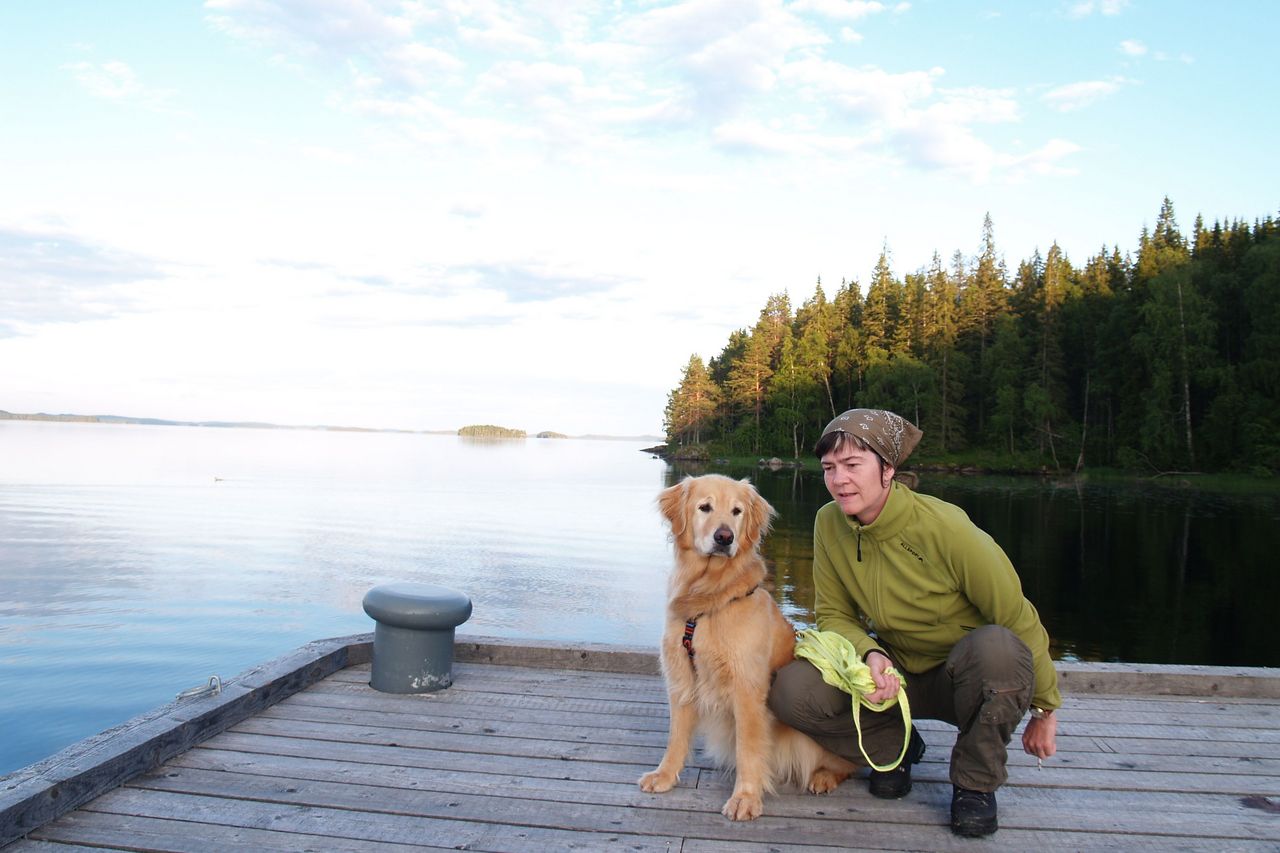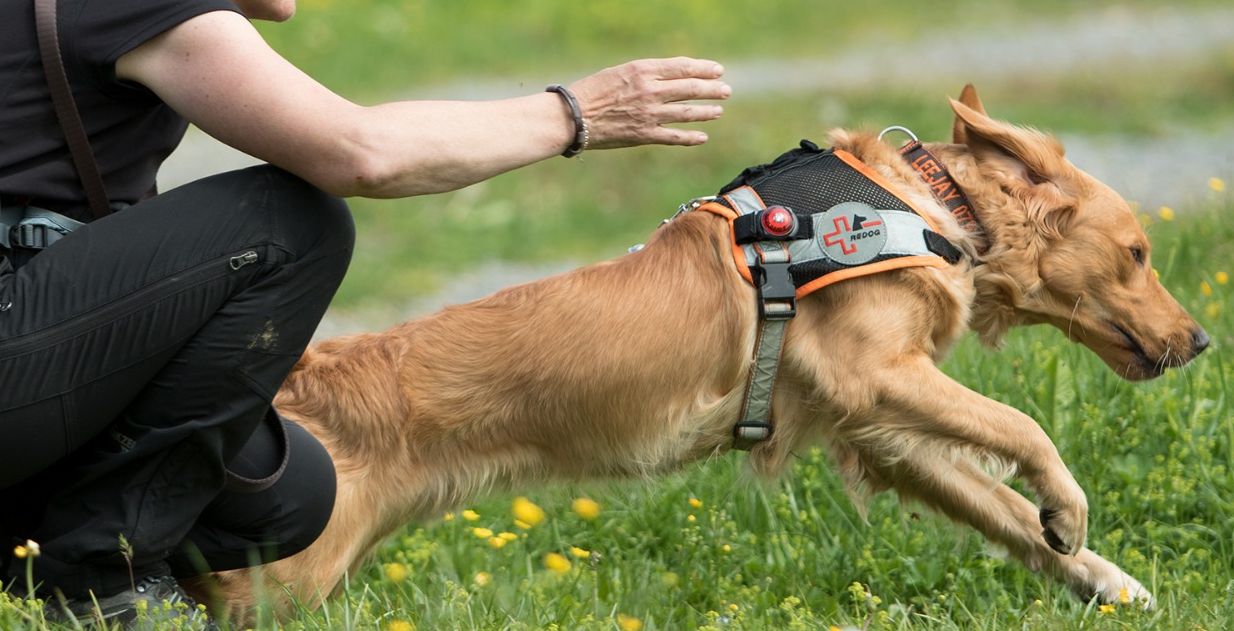Nugget, a lucky break in life
It was a dog that comforted Marianne Heinlein during a difficult period in her life. When she was doing better again, she wanted to work with Nugget to give back to society some of the support she’d had received herself.
Portrait: Dagmar Wurzbacher
Photos: Marianne Heinlein and Markus Willi
It was a final gift from her husband before he died at a young age. He said to her: “You need someone to get through this.” And this someone was Nugget. Marianne Heinlein, who never before had owned a dog, became a dog owner through these tragic events, then progressed onto becoming a search and rescue dog handler trainee.
Today, she dedicates the majority of her time to her dog and REDOG. “It simply turned out this way,” comments the 53-year old with modesty. As if it was the most natural thing in the world to first train a search and rescue dog and then to also turn her house into a sanctuary for unwanted animals. After lunch, Marianne Heinlein locks up her tearoom and dedicates her time to her animals, together with her partner, who is also called Marianne and who also trains search and rescue dogs.
It simply turned out this way
Marianne Heinlein, search and rescue dog handler trainee
“During one of the darkest periods in my life, so many people, friends and family alike, looked after me.” But they were not the only ones. Help came unexpectedly without anyone wanting anything in return. “I was so touched by this that I wanted to give something back somehow.” As Marianne Heinlein was aware right from the start that there is much more to keeping a dog than just going walkies around the block, she searched for a useful activity. By chance, she hit on a training course for therapy dogs. “Nugget was the star of our care home visits.”
She only got onto search and rescue work later on with Leejay, a Golden Retriever just like Nugget. At less than two years old, he acts like an old pro during training sessions. “Leejay learns quicker than me,” she laughs proudly. “It’s almost creepy sometimes.” After just half a year of training for both, Leejay already carried the signal in his mouth. The dog carries the signal, a roughly 10 cm long nylon plait, attached to its collar. It is the main means of communication between rescue dog and handler.
If the dog returns with the signal in its mouth, that means it has found something. This could be a human lying on the ground or even a lonely backpack or lost jacket. It basically is something that does not belong in the particular environment. The search dogs do not pay any attention to walkers or hikers that pass them by. The signal is a clever means of communication as the rescue dogs work alone up to 80 metres away.
Both human and animal train countless hours to make sure this is done correctly. Every Tuesday and sometimes also on weekends, in every weather. Ordinary walkies are also used as training. The training, which includes Alpine rescue, orientation and first aid, takes two to three years. Marianne Heinlein and Leejay have to pass several suitability tests and before being deployed, they have to pass a final test where they have to search a designated area for several hours, across various altitudes and carrying a 15 kg backpack.
Why does this petite woman work so hard for REDOG, the Swiss search and rescue dog association? She smiles: “I only found out about the heavy backpack later on.” Then she adds: “The first two or three drops of rain are irritating. They get you wet. But once you’re wet, it no longer matters.” She feels great every time she gets home from training. “I was out in nature together with Leejay and learnt a lot about our work and myself. I have done something useful together with my dog.” And if this leads to helping people, like a family for instance, who are missing someone and are going crazy with uncertainty: “What could be better than that?”


